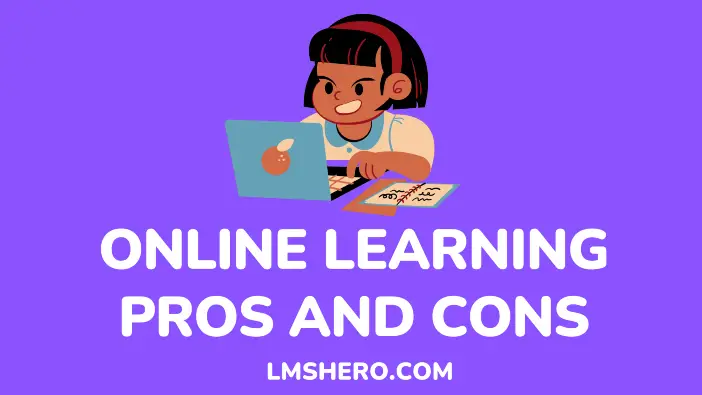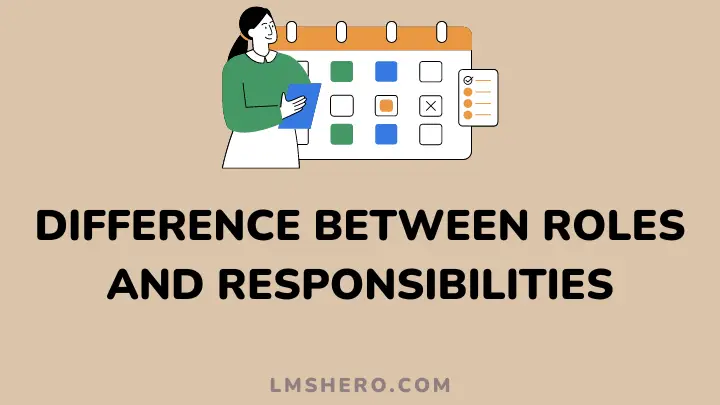As with physical learning done in classrooms, online learning has its pros and cons. In this post, we are going to examine what online learning is. Then we will dissect the benefits and drawbacks that come with studying over the internet.
The pandemic that swept across the world last year brought about what is now referred to as the new normal. One of the new changes has been there increased prevalence of online learning.
Now online learning is hardly a new phenomenon. But, it has grown significantly mainstream over the last year.
What is Online Learning?
Simply put, online learning is education that is carried out partly or entirely over the internet. It can also be referred to as e-learning. Online learning uses the internet as a medium to pass out information to students in combination with a variety of tools.
Usually, online learning requires students to enroll in a course on the internet and learn using live or pre-recorded videos and audio.
Many institutions offer online learning courses. These include Ivy League universities such as Harvard and MIT. But, even ordinary individuals may decide to create online courses based on their areas of expertise.
What is common is that students are allowed to learn at their own convenience and pace, without necessarily having to step into a classroom.

Now let’s see some common online learning pros and cons.
Advantages of Online Learning
There is a ton of advantages that come with online learning. Online learning is convenient, affordable, and convenient for people with different lifestyles.
There is a wide variety of courses and subjects available online for learning and the flexibility offered by online learning cannot be overemphasized.
1. Affordability
A very crucial benefit of online learning is that it saves money. Before online learning became mainstream, earning a degree, diploma, or professional certification used to be a pricey affair.
That is no longer necessarily the case these days. With so many different online learning platforms available, basically, anybody can earn career uplifting certifications and even degrees online at relatively cheaper fees.
They can even do it for free too. Many online learning platforms allow individuals to audit their available courses entirely free of charge. This allows people to gain valuable knowledge and skills that would have been tougher to get.
2. Flexibility of Time and Place
Classroom learning requires students to be physically present to attend lectures. That means that if you are physically unavailable, then you will be forced to miss classes.
This is not an issue with online learning. Here, employees and business people struggling to fit in some valuable education while juggling a tight schedule will find things much easier than if they had to use classroom learning.
Many online courses do not have strict login times. They are designed in a way that students can log in at any point in time and still be able to access their lessons.
Hence, it is a convenient option for students who work full-time or who have to deal with other commitments.
3. Online Courses Save Time
This advantage is closely associated with the previous one. Being physically present in a classroom requires more than just the number of hours spent in the classroom itself.
When you add up the total amount of time it takes to prepare for classes and physically transport yourself over, you will discover that a lot of time goes into regular classroom learning.
On the other hand, online learning cuts out a significant portion of that time, which can be employed for more profitable uses.
4. Reduced Discrimination
Online learning provides a level playing field for all students. Because of the anonymity offered based on the nature of online learning, students from all kinds of backgrounds can learn from the safety of their own homes.
What this means is that discrimination takes the backseat in online learning.
5. It is Environmentally Friendly
Classroom learning can have a significantly negative impact on the environment. This is because it uses up a lot of energy and environmental resources in order to sustain it.
Online learning is significantly more eco-friendly.
6. Creativity and Increased Range of Teaching Tools
Online learning tends to bring out the creativity in teachers and lecturers. In a bid to pass knowledge across more efficiently, a wide range of tools and resources are employed in online learning classes.
Online learning tools are technology, apps, or programs that can be used by both teachers or lecturers, and their students over the internet to help facilitate efficiency in learning.
This includes such helpful tools as Socrative, which allows teachers to create exercises and fun educational games for their students. You also have Veed, which is a very simple, very convenient screen recording tool.
There is an infinite number of online learning tools, and they vary in terms of usefulness and functionality. You can explore this website for information and guides on some of the best and most popular options.
Disadvantages of Online Learning
While online learning comes with several significant advantages over classroom learning, it is not all sweet. Unfortunately, it also has its drawbacks.
Let’s look at them in turn.
1. Technology Issues
The major component of online learning is the use of technology to facilitate learning. So, teachers and students must have access to certain technological tools, such as computers, smartphones, and high-speed internet connections.
For many people, this is not much of a problem. Unfortunately, it is not the case with many others.
Especially in economically disadvantaged areas and regions, many students are not able to afford these basic tools or simply have no access to them. This is in spite of the increased levels of internet penetration around the world over the last decade.
Additionally, computer illiteracy is a prevalent problem in many parts of the world. Without at least a passing knowledge of how to use a computer, online learning is virtually impossible without external help.
In contrast, any student can simply go into a classroom to learn physically, even if they do not own a laptop, a smartphone, or Wi-Fi.
2. Reduced Social Interaction
Online learning to a large extent, cuts down interaction in any form to instructor-to-student interaction. In some forms of online learning, this sort of interaction does not even exist.
While this may sometimes lead to an increased focus on academic pursuits, it can negatively impact the student.
Social interaction in the classroom has many benefits, after all. These benefits include: helping to develop social skills, reduced stress levels, increased engagement, motivation, and it can significantly improve performances.
Student-to-student interaction must be encouraged in online learning platforms. Group assignments can help collaborations thrive and create opportunities for impactful interactions.
3. Increased Screen Time
Online learning may require students to be in front of a computer or smartphone for extended periods of time.
While this may be convenient for a lot of students, it has significant drawbacks, among which is potentially putting the health of the students in jeopardy.
Consistently sitting in front of a computer may lead to decreased eye health and the onset of various eye conditions. It may also result in consequences for bad postures, such as rounded backs. Headaches are quite common.
An efficient method of mitigating this disadvantage is taking consistent breaks from the class. A few minutes of walking around and stretching can do a whole lot of good.
For sustained eye health, the 20-20-20 eye rule can be very beneficial. After every 20 minutes of looking at your screen, focus on a spot 20 feet away for 20 seconds. This will play a very important role in combating eye strain.
4. Not Great For Practical Learning
As you can imagine, online learning can come in very handy for subjects or courses that are theoretical in nature. When it comes to practicals, it is often not quite as efficient.
Of course, this does not mean that it is entirely useless for practical courses. But where it excels is courses where hands-on activities and tasks are not essential.
For example, online learning would be much more efficient for learning art history than it will be for learning mechanical engineering.
FAQs
Q: Is online learning expensive?
No. Compared to traditional brick-and-mortar learning, online learning is very pocket-friendly.
Of course, prices range widely, depending on the platform, instructors, and the courses offered. Still, you will be learning at a fraction of the cost of a comparable course in a traditional institution.
Q: Is online learning right for me?
To know whether or not online learning is for you, you should consider online learning pros and cons. And then, it is up to you to decide whether they align with your schedule and lifestyle.
Summary
Stuck at home due to the pandemic? Unable to enroll in a diploma program at the local university due to your intensely busy schedule? Or maybe you simply cannot afford to pay for that certification due to just how expensive it is.
Whichever of these situations or their variants you are stuck with, online learning may just be the solution you need. It comes loaded with benefits such as convenience and flexibility, affordability, and efficiency.
Yet even though it seems to be the way forward, online learning pros and cons need to be considered.
Thanks for reading.







